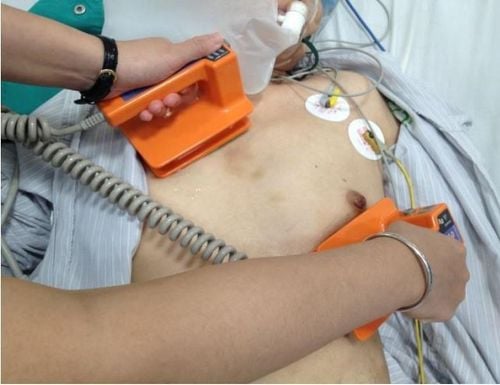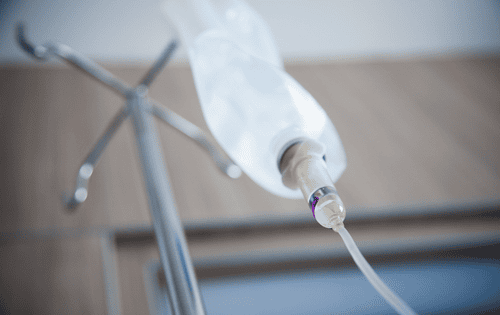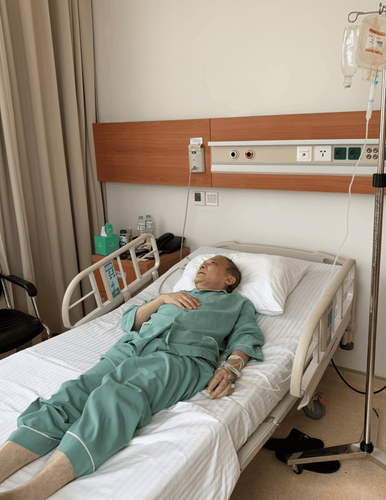This is an automatically translated article.
The major problems associated with hemorrhagic shock and hypovolemic shock in trauma are fluids and fluid resuscitation. Rehydration should be done quickly because it is not a substitute for complete control of bleeding. In addition, fluid resuscitation for trauma patients directly affects the results of treatment.1. Epidemiology of traumatic shock
According to some statistics, about 5% of patients with severe traumatic shock need to go to the emergency department. The cause was bleeding but assumed normal bleeding until the cause of shock was clearly established. Shock accounts for about 20 to 40% of the overall mortality in trauma. Some other causes of traumatic shock are: cardiogenic shock, neurogenic shock, or a profound systemic inflammatory response following trauma leading to larger lesions.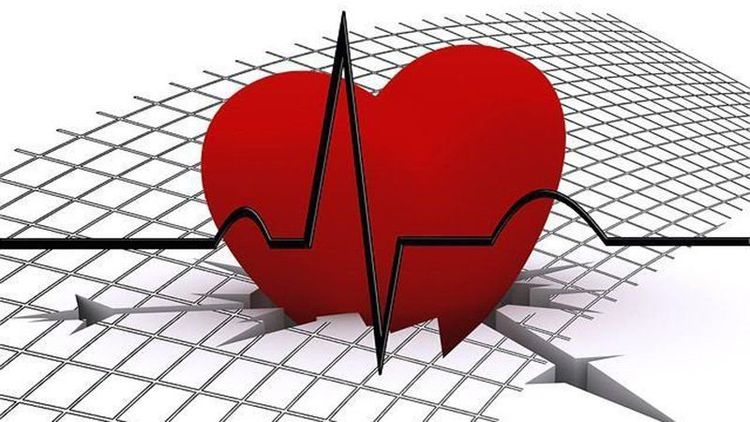
Sốc tim là một trong số những nguyên nhân dẫn tới sốc chấn thương
2. Diagnosis of shock and monitoring of fluid resuscitation
Shock is defined as inadequate tissue perfusion due to an imbalance between tissue oxygen supply and demand.Depending on the severity of the shock, different organs are affected and the symptoms are different. Only severe cases have obvious symptoms involving the heart and brain.
There are many different cardiovascular, neurological, and endocrine responses such as tachycardia, vasoconstriction after initial shock trauma. This injury is caused by both direct and indirect mechanisms through one of the untreated compensatory responses.
Hypotension and tachycardia should not be used to diagnose shock because these parameters are not highly sensitive. Up to 25% of patients with shock have normal blood pressure and heart rate. When the patient presents with tachycardia and low blood pressure, the cause may be the result of a profound circulatory disorder disease.
Use of a pulmonary artery catheter may have benefits for elderly patients with severe trauma, but more research and evaluation is needed to draw definitive conclusions. In the group of patients with unclassified traumatic shock, no improvement in mortality was observed when a pulmonary artery catheter was used to achieve an appropriate resuscitation cut-off point.
3. Treatment of hypotension (low blood pressure within an acceptable range)
Reversal of low blood pressure refers to the concept of limited fluid resuscitation to maintain organ function, a process that continues until the underlying cause of the drop in blood pressure (usually due to bleeding) is resolved. blood). The goal of treatment is to avoid complete hemodynamic collapse rather than to achieve normal arterial blood pressure. In many animal studies and trials, it has been shown to be beneficial in limiting fluid resuscitation in order to reduce arterial blood pressure. Human studies also support delayed fluid resuscitation in patients with profound physical trauma (grade 1). Reducing target blood pressure and fluid volume during resuscitation reduces the incidence of conditions such as acute respiratory distress syndrome (ARDS), abdominal cavity, and blood loss, and improves inflammatory responses. . Low blood pressure targets during resuscitation are of great interest in various research areas, but they have not been shown to be more effective for all mechanisms of injury.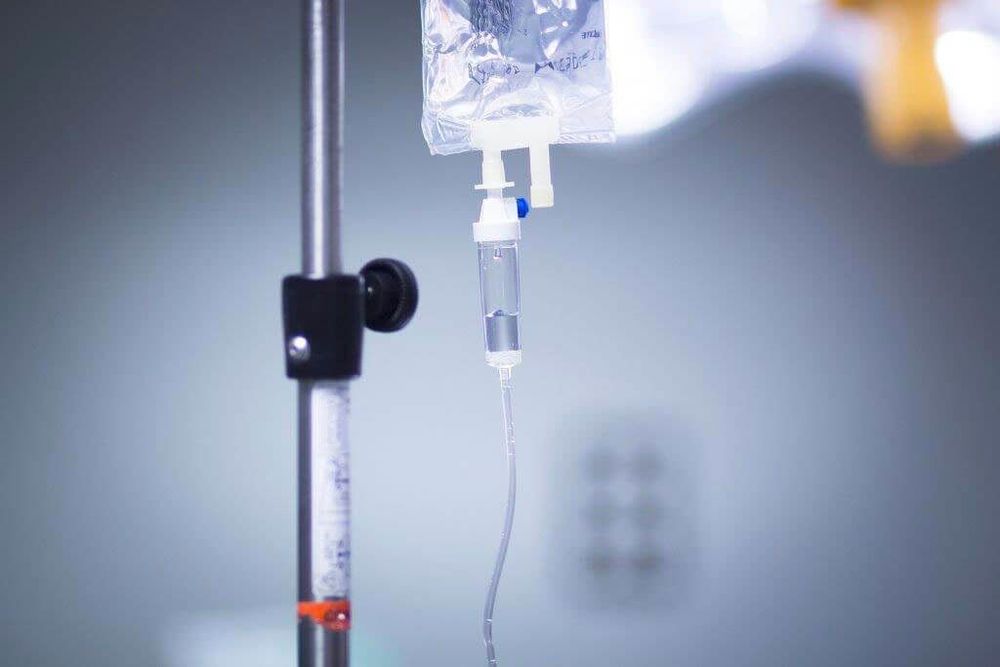
Hồi phục huyết áp thấp đề cập tới khái niệm bù dịch hạn chế tới mức độ tối thiểu để duy trì chức năng tạng
3. Selection of infusion
3.1. Crystal infusions In advanced trauma resuscitation, it is recommended that crystalloids be given first. Ringer lactated solution is preferred for trauma patients due to the risk of metabolic acidosis due to increased chlorine content compared with normal saline. Indications for large volume crystalloid infusion can be harmful as in some cases: dilution of coagulation factors, ARDS (acute respiratory failure) and increased intra-abdominal pressure. Excessive and inappropriate fluid resuscitation can contribute to increased patient mortality. Crystals should be treated like any drug, with indications, side effects, adverse effects, and contraindications to be followed. 3.2. Hypertonic saline There have been several studies on the use of 3 to 7.5% hypertonic saline in trauma patients requiring rehydration. However, there is no convincing evidence to support routine use of hypertonic saline. The theoretical advantage of hypertonic salts is to stabilize the volume of fluid from the cells into the vascular lumen. Along with that is the interstitial space without significantly increasing the total volume of water in the whole body. Because hypertonic saline redistributes into the third compartment at a relatively slow rate, smaller volumes of fluid can be compensated. Except for the routine administration of hypertonic saline, the administration of hypertonic saline is also an effective means of controlling intracranial pressure in patients with traumatic brain injury (due to the much greater concentration of NaCl 23). ,4%). 3.3. Colloidal fluid Colloidal fluid is a fluid containing proteins, which are allowed to exist in the vessel lumen and create a colloidal osmotic pressure that helps the transition from the cells to the interior of the vessel. Colloids can improve microvascular perfusion but are more expensive than crystalloids and are associated with many deleterious immunological effects. Artificial colloids used in high doses can lead to blood clotting disorders. Dextran colloid has been associated with some fatal cases of anaphylaxis or diseases such as pulmonary edema, platelet dysfunction, and kidney damage. 3.4. Blood and blood products Blood products are substituted for crystalloids in early rehydration in bleeding patients. Blood products can also re-establish the coagulation system in bleeding patients. However, some limitations of this method include: high cost, risk of transfusion reactions and transmission of pathogens in the blood. Red blood cell mass is the usual first-line product, the fastest available is the transfusion of group O RBCs for bleeding patients until appropriate units of blood are available. Transfusion of blood that contains 10 or more RBCs in less than 24 hours is called a bulk transfusion. This procedure is very common in trauma centers for the purpose of coordinating the delivery of blood products to patients requiring high volume transfusions. To promptly and smoothly communicate between the resuscitation team or the trauma team and the blood bank. The use of fresh frozen plasma in the early stages is recommended to compensate for coagulation factors in anemic patients. When large volume transfusions are anticipated, a 1:1 to 1:2 ratio (FFP:PRBC ratio) should be given. The purpose of ratio dilution is to avoid dilution of the clotting factor and to improve patient survival. The process of large volume transfusion requires monitoring of important parameters such as: HCT, INR, platelet count, fibrinogen and aPTT. Transfusion and rehydration for trauma patients is an important step in supporting the treatment of the disease. Vinmec International General Hospital is one of the hospitals that not only ensures professional quality with a team of leading doctors, modern equipment and technology, but also stands out for its examination and consulting services. and comprehensive, professional medical treatment; civilized, polite, safe and sterile medical examination and treatment space. Customers when choosing to perform tests here can be completely assured of the accuracy of test results.Please dial HOTLINE for more information or register for an appointment HERE. Download MyVinmec app to make appointments faster and to manage your bookings easily.




